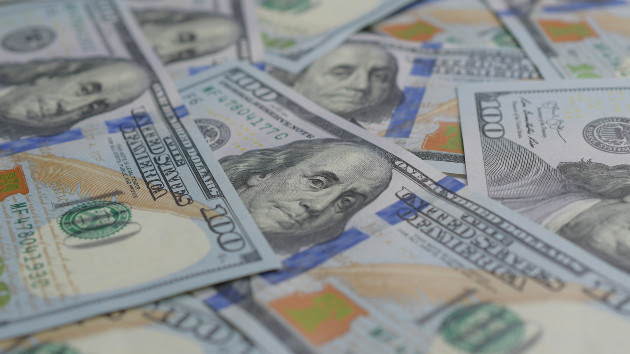(NEW YORK) — The collapse of First Republic Bank on Monday left it under control of the U.S. government, which quickly sold the bank to JPMorgan Chase. The move aimed to shore up the financial system after a cascade of major bank failures.
JPMorgan Chase, the nation’s largest bank, retained the majority of First Republic’s assets and all of its deposits, JPMorgan Chase said on Monday. In turn, the deal fully protects depositors at First Republic, who immediately became customers of JPMorgan Chase.
To achieve the rescue, however, a federal agency provided $50 billion in financing to JPMorgan Chase, setting off questions about whether the government had orchestrated a bank bailout.
Speaking at the White House on Monday, President Joe Biden applauded the government effort and assured that the move would not require taxpayer support.
“Regulators have taken action to facilitate the sale of First Republic Bank and ensure that all depositors are protected and the taxpayers are not on the hook,” Biden said.
“These actions are going to make sure that the banking system is safe and sound,” he added.
Here’s what to know about the rescue of First Republic and whether it’s a bailout:
Is the First Republic rescue a bailout?
First Republic, the nation’s 14th-largest bank, fell into financial turmoil because it specialized in long-term mortgage loans to affluent clients.
As interest rates rose rapidly over the past year, the mortgage loans and other investments lost value, leaving the bank with losses on a sizable portion of its balance sheet.
After the failure of Silicon Valley Bank and Signature Bank last month, panicked depositors withdrew a significant share of the bank’s funds in part because many of the customers held deposits that exceeded the limit covered by federal insurance.
If the bank had failed without a buyer, the remaining uninsured depositors may have lost their funds.
JPMorgan Chase on Monday agreed to acquire all of the bank’s $103.9 billion in deposits as well as the majority of its $229.1 billion in assets, according to the Federal Deposit Insurance Corporation, a federal agency.
As part of the deal, the FDIC provided $50 billion in financing to JPMorgan Chase, the bank said on Monday. Ultimately, the final cost to the FDIC will be approximately $13 billion, the agency said.
The financing from the FDIC qualifies as a bailout since it marks the transfer of funds from the U.S. government to JPMorgan Chase as a condition of the sale of First Republic, some experts told ABC News.
“The biggest fear is banking runs and lost confidence — that is why the FDIC had to act quickly,” said Edward Moya, a senior market analyst at broker OANDA. “I would consider that a bailout.”
“The focus is to make sure the bank failure doesn’t significantly lead to a crisis,” he added.
Anat Admati, a professor at Stanford’s Graduate School of Business, echoed the sentiment, noting that the FDIC appears to have helped ease the acquisition of First Republic.
“This seems to be more that guaranteeing deposits, and then it becomes something that I would consider a bailout,” Admati told ABC News.
In backstopping First Republic customers, however, the FDIC ultimately carried out its mandate of guaranteeing depositors, even if by indirect means, Morris Pearl, a former managing director at asset manager BlackRock, told ABC News.
“It depends on your definition of the word ‘bailout,"” Pearl said. “It’s kind of like if you damage your car, the insurance company might pay to repair the car or they might say this car is beyond hope and we’ll give you money to buy a new car.”
JPMorgan Chase said the government chose it as a buyer because the bank’s bid gave the FDIC more favorable terms than rival offers.
“Our financial strength, capabilities and business model allowed us to develop a bid to execute the transaction in a way to minimize costs to the Deposit Insurance Fund,” JPMorgan Chase CEO Jamie Dimon said in a statement.
Will the sale of First Republic cost U.S. taxpayers?
The government funds required for the sale of First Republic will come out of the Deposit Insurance Fund, a pool of billions of dollars kept in case the government needs to cover insured depositors after a bank failure, the FDIC said.
The Deposit Insurance Fund receives funding from banks, which pay insurance premiums in order to receive protection from the U.S. government and offer that guarantee for customers. The agency also derives income from investments made with the insurance revenue.
In turn, the bailout of First Republic will not draw on individual taxpayers, since the funds do not come from taxes levied on everyday Americans.
If the banking panic continues to spread, the federal government may have to take further action that draws on the Deposit Insurance Fund, potentially exhausting the fund and calling on taxpayers to supplement it with additional money.
For now, however, such an outcome appears remote. At the end of last year, the Deposit Insurance Fund held $128.2 billion, according to a quarterly report.
Copyright © 2023, ABC Audio. All rights reserved.












